But before you make the leap, it’s important to understand what life in Alaska really entails. Relocating to the 49th state comes with unique rewards and challenges, including remote living conditions, a distinctive job market, higher costs of goods, and the logistical hurdles of moving to a geographically isolated area.
Whether you’re drawn to the midnight sun, the promise of outdoor exploration, or the appeal of off-grid living, this guide will help you navigate every aspect of the move — from finding housing and employment to transporting your car and adjusting to the Alaskan climate.
You’ll also find expert tips on cost of living, healthcare, education, and the cultural fabric that makes Alaska such a special place to call home. At Sherpa Auto Transport, we specialize in vehicle shipping to Alaska — helping you get your car to your new home safely and affordably.
With trusted expertise in long-distance moves, we’re here to make your journey to Alaska as smooth as possible. This article outlines everything you need to know about moving to Alaska in 2025.
Key Takeaways
- Moving to Alaska presents unique challenges and opportunities, from climate considerations to the cost of living.
- Alaska offers both urban and remote living options, with a distinct economy.
- Due to the harsh conditions, Alaska travel and recreation can be beautiful and challenging.
- Proper planning is essential for shipping household goods and vehicles when moving to Alaska.
- Sherpa provides reliable and cost-effective car shipping to Alaska. Email sales@sherpaautotransport.com for a customized quote.
In This Guide
- Why You Should Move to Alaska
- Things to Consider When Planning a Move to Alaska
- How to Move to Alaska for a Smooth Relocation
- Alaska Moving: Additional Considerations
- Alaska Fast Facts
- Alaska Moving FAQs
Why You Should Move to Alaska

Alaska, often referred to as ‘The Last Frontier,’ offers a living experience like no other. Its awe-inspiring landscapes, abundant wildlife, and tight-knit communities make it a dream destination for those who love adventure and the outdoors.
The state’s slower pace of life and access to pristine nature, along with abundant opportunities for fishing, hiking, skiing, and other outdoor activities, make it an ideal choice for those seeking a unique living experience.
Popular winter activities include cross-country skiing and ice fishing, which attract many visitors to the region during the colder months. The unparalleled natural beauty is one of the most compelling reasons to move to Alaska.
From the majestic peaks of Denali to the stunning glaciers and fjords, Alaska’s landscapes are some of the most breathtaking in the world. The state is home to numerous national parks and protected areas, offering endless opportunities for exploration and adventure. Residents often enjoy a sense of peace and solitude that is hard to find elsewhere.
Moreover, Alaska’s unique cultural heritage and community spirit make it an attractive destination for those seeking a close-knit community. The state’s diverse population includes many indigenous people, and their traditions and customs add to the region’s rich cultural tapestry.
Additionally, Alaskans are known for their resilience and hospitality, fostering a strong sense of community and mutual support. This social network can be especially appealing for those looking to escape the hustle and bustle of urban life and connect with others who value self-reliance and camaraderie.
The opportunity to live in such a unique and beautiful environment, combined with the potential for a fulfilling, community-oriented lifestyle, makes Alaska an appealing choice for those seeking a new adventure.
Expert Advice: Read our Moving Trends guide to see the most popular states Americans are moving to and away from.
Nature
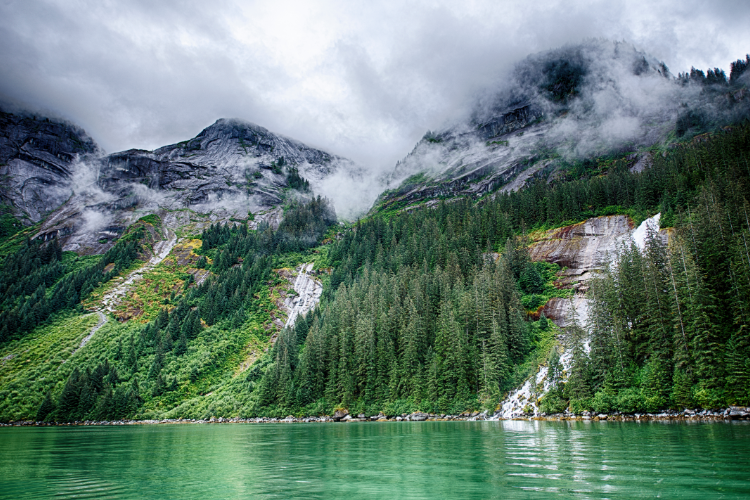
One of the most compelling reasons to move to Alaska is its unmatched natural beauty. From the towering peaks of Denali to the sprawling tundra, glaciers, and fjords, Alaska’s diverse geography offers endless opportunities for outdoor adventure and exploration.
With over 3 million lakes, 100,000 glaciers, and 17 of the 20 highest peaks in the United States, the state is a paradise for nature lovers. Residents enjoy activities like kayaking through glacial bays, witnessing the northern lights, or hiking in vast national parks like Wrangell-St.
Elias and Glacier Bay. Wildlife is part of everyday life, with frequent sightings of moose, bears, eagles, and even whales. The sense of peace and solitude found in Alaska’s wilderness is hard to replicate anywhere else. It’s not just a place to live—it’s a place to connect deeply with the natural world.
Culture
Alaska is equally rich in cultural heritage, deeply influenced by its Indigenous communities and frontier spirit. The state is home to more than 227 federally recognized tribes, and their traditions, languages, and festivals are woven into daily life across the state.
From the Iñupiat in the Arctic to the Tlingit in Southeast Alaska, Alaska’s Native cultures contribute to a vibrant and respectful community dynamic. Events like the World Eskimo-Indian Olympics, Iditarod Sled Dog Race, and Alaska Native Heritage Month highlight the resilience and pride of these communities.
Beyond Indigenous heritage, Alaska also embraces its pioneer and homesteading history. Many residents are drawn to the state’s ethos of self-reliance, community support, and simple living. It’s a place where neighbors help neighbors, and storytelling, craftsmanship, and tradition matter.
Whether you’re drawn to the lifestyle, landscape, or cultural richness, Alaska offers a one-of-a-kind experience for those ready to embrace its rhythm and rewards.
Things to Consider When Planning a Move to Alaska
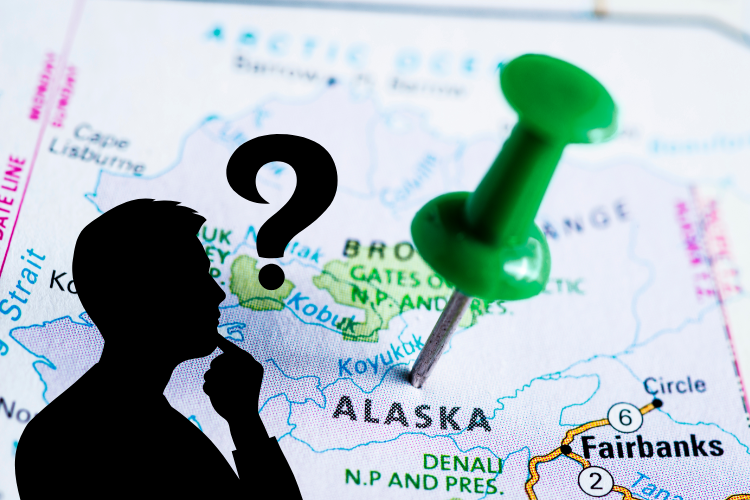
From its remote living conditions to its distinct economy, it’s essential to be well-informed before making the move. An Alaska move presents unique challenges and experiences, making personalized support important for a smooth transition. In this section, we’ll explore key aspects like the types of living environments available, the job market, transportation challenges, and the recreational opportunities in Alaska.
For those interested in a deeper dive into what it’s like to live in Alaska, additional articles from sources like Livability and U-Pack provide comprehensive insights into the Alaskan lifestyle and practical tips for new residents.
Some Alaska Cities, but Mostly Remote Living
While Alaska has several cities, such as Juneau, Ketchikan, and Anchorage, much of the state is rural and remote. Many Alaskans have limited access to amenities and services, which can be a significant adjustment for those used to urban living.
Fairbanks, Alaska, is known for its population size, cultural diversity, and unique characteristics, including its location along the Chena River. It is a military town and an educational center, making it a desirable place to live. Anchorage is the largest city in Alaska, offering better amenities and a youthful, diverse population, positioning it as the urban center of the state.
Climate and Weather
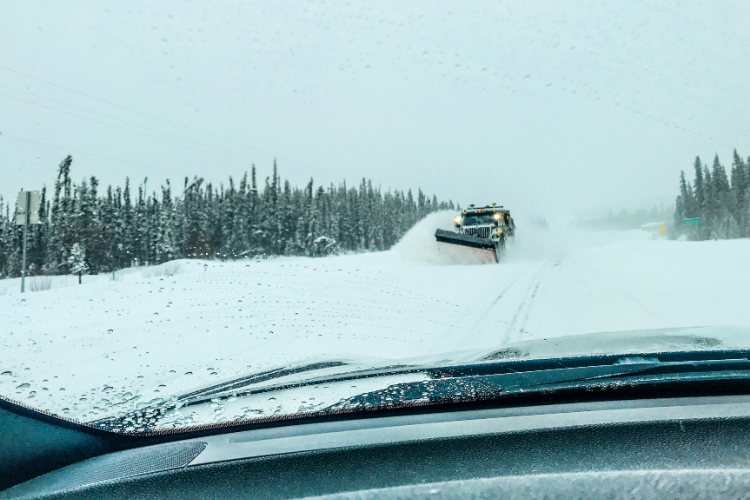
Due to its vast size, Alaska’s climate varies significantly. Winters can be frigid, especially in the interior regions, with temperatures dropping as low as -50 degrees Fahrenheit. Coastal areas like Anchorage experience milder winters.
Summers can be surprisingly warm, reaching 90 degrees in some areas. The state also experiences unique daylight variations, with long summer days and very short winter days.
Expert Advice: Properly winterizing your car during the colder months is important to preserve its condition.
Alaska Job Market, Workforce Development, and Economy
The Alaskan economy relies on industries such as oil, natural gas, fishing, and tourism. Job opportunities vary significantly by region and industry, so it’s advisable to secure employment before moving. The state’s unemployment rate tends to be higher than the national average.
While Alaska’s cost of living is higher than the national average, it is not the most expensive state in the U.S. Housing costs can vary, with urban areas like Anchorage having prices similar to other U.S. cities. Remote locations are more expensive due to logistics and higher costs for utilities and groceries.
Alaska does not have individual income taxes or statewide sales taxes, which can be a financial advantage. However, some cities may impose local sales taxes, typically under 5%. This absence of a state sales tax contributes to the overall affordability of living.
Traveling in Alaska: Direct Flights and More
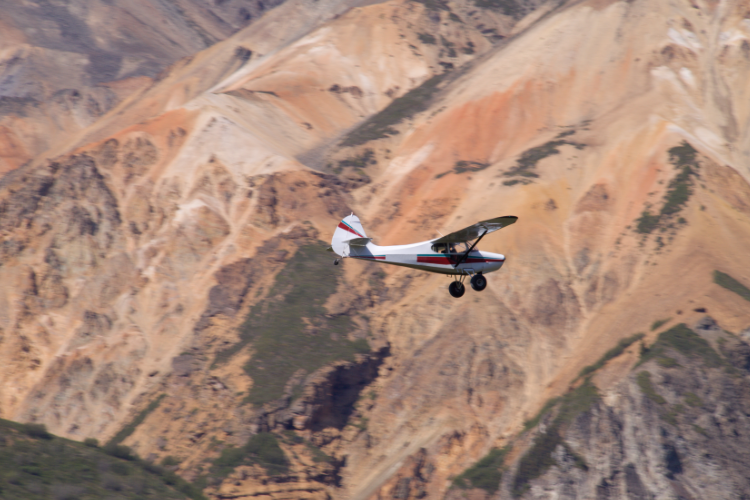
Alaska’s transportation infrastructure is unique, with many areas only accessible by plane or boat. Public transportation is limited, so owning a vehicle is essential, particularly one equipped for rugged terrain. Anchorage is one of the few cities with a public transportation system.
The Alaska Railroad is a crucial transportation option for connecting various cities, including key destinations like Anchorage, Talkeetna, and Fairbanks. Additionally, there are direct flights available to major Alaskan hubs like Anchorage, Fairbanks, and Juneau, making travel to the state more convenient.
Alaska Community and Culture
Alaskans are known for their strong community spirit and hospitality. The state’s cultural heritage is rich, with significant indigenous influences. Festivals, traditional foods, and local customs are integral to Alaskan life. Residents can also encounter diverse wildlife, including mountain goats, moose, and bison, adding to the rich natural experiences available in the region.
The sense of community extends to practical aspects of life as well. Many businesses offer comprehensive solutions for both moving and storing items, with storage services available for households and businesses alike.
How to Move to Alaska for a Smooth Relocation

Moving to Alaska is a significant undertaking, but with proper planning and preparation, it can be a smooth and exciting adventure. Whether you choose to drive and enjoy the scenic routes or ship your household goods and vehicle, understanding the logistics and having a solid plan will help make your move successful.
Shipping Your Stuff
Transporting your belongings is one of the biggest challenges when considering moving to Alaska. Due to the state’s remote location, shipping household goods can be expensive and logistically complex. Working with reputable moving companies with experience in Alaska relocation is essential.
U-Pack offers helpful tips and options for those moving to Alaska. They recommend starting your planning early, as services can be limited and in high demand during peak moving seasons. Consider shipping your belongings ahead of time to avoid the rush and ensure a smooth transition.
Alaska Car Shipping with Sherpa
Sherpa Auto Transport provides reliable vehicle shipping services to ensure your car arrives safely. Our expertise in long-distance moves makes us the ideal choice for shipping your vehicle to Alaska. We provide car shipping solutions to get your car to Alaska from anywhere within the contiguous United States.
We handle both the inland and ocean transport so that you can focus your time and attention on all of the other details necessary for the move. Interested in shipping your car to Alaska? Email sales@sherpaautotransport.com to speak to an Alaskan shipping expert.
Driving to Alaska
If you plan to drive to Alaska, prepare for a long and potentially arduous journey. There are a few routes you can take, with the most popular being the Alaska Highway and the Stewart-Cassiar Highway. The Alaska Highway, also known as the Alcan Highway, spans around 2,000 miles from Dawson Creek, British Columbia, to Delta Junction, Alaska.
This route offers stunning scenery, including the Rocky Mountains and the Yukon Territory. Along the way, you’ll pass notable sights like Kluane National Park, Liard Hot Springs, and the Sign Post Forest.
For a more remote and wildlife-rich experience, consider the Stewart-Cassiar Highway. Although it’s about 130 miles shorter than the Alaska Highway, it can add up to two hours to your drive due to its rugged and less-traveled nature.
This route connects with the Alaska Highway near Watson Lake and is ideal for those looking to get away from it all while enjoying beautiful wilderness Preparation is key before driving to Alaska. Ensure your vehicle is in excellent condition, carry emergency supplies, and be ready for unpredictable weather and road conditions.
For more detailed guidance on driving routes and tips for your journey, check out resources like Getting Stamped and Ordinary Adventures.
Alaska Moving: Additional Considerations

Education in Alaska
Education in Alaska is a point of pride for many residents. Public schools in the state are consistently ranked among the finest in the nation, with the Anchorage School District boasting ACT and SAT scores above the national average. This commitment to quality education extends beyond primary and secondary schools.
Alaska has a strong focus on workforce development, with numerous programs designed to prepare students for careers in vital industries such as oil and gas, mining, fishing, and tourism. These programs ensure that students are well-equipped to enter the workforce and contribute to the state’s economy.
Higher education opportunities in Alaska are robust, with institutions like the University of Alaska, Alaska Pacific University, and Wayland Baptist University offering a wide range of academic programs and research opportunities. Additionally, Charter College and other institutions provide further options for students pursuing their educational goals.
Healthcare in Alaska
Healthcare in Alaska presents unique challenges, particularly due to the state’s high cost of living and remote locations. However, Alaska is committed to ensuring that its residents have access to quality healthcare services. The state boasts a range of medical facilities, including hospitals, clinics, and specialized treatment centers.
The Alaska Department of Health and Social Services plays a crucial role in promoting public health and well-being. It offers a variety of programs focused on disease prevention, health education, and emergency preparedness. These initiatives are designed to address the specific health needs of Alaskans, particularly those living in rural and remote areas.
To meet the unique healthcare needs of its residents, Alaska has embraced innovative solutions such as telemedicine and home healthcare services. These specialized services help bridge the gap for those living in isolated communities, ensuring that everyone has access to the care they need.
By understanding these key aspects of life in Alaska, you can better prepare for a seamless relocation to this remarkable state. Whether you’re drawn by the unspoiled wilderness, the tight-knit community, or the opportunities for adventure, Alaska offers a unique and fulfilling lifestyle.
Alaska Fast Facts
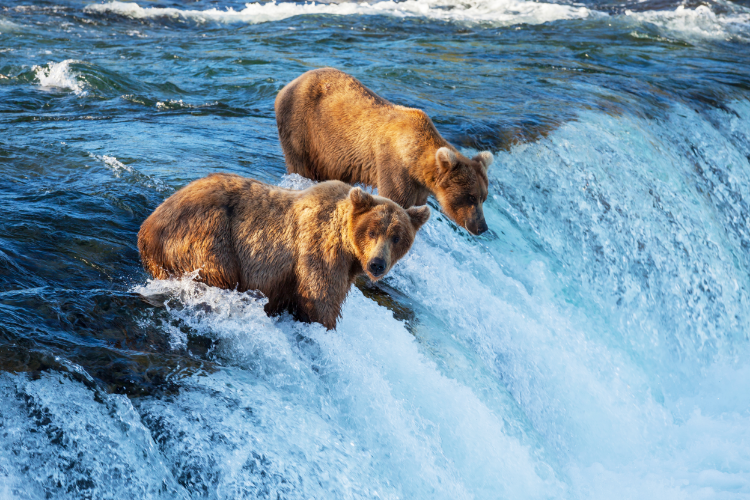
Alaska is a state of superlatives, known for its vast landscapes and unique characteristics. Covering approximately 663,300 square miles, it is the largest state in the United States by a significant margin.
Despite its size, Alaska has a relatively small population of around 739,795 people, resulting in an average of just 1.1 people per square mile. This low population density contributes to the state’s sense of unspoiled wilderness and natural beauty.
The geography of Alaska is incredibly diverse, featuring dense forests, expansive glaciers, and tundra regions. The state’s climate varies widely, with average temperatures ranging from 59°F in the summer to 24°F (-15°C to -4°C) in the winter.
This short growing season can be a challenge, but it also contributes to the unique lifestyle and resilience of Alaskans. Alaska is home to 227 federally-recognized indigenous tribes, each with a rich cultural heritage. The state places a strong emphasis on cultural preservation and education, ensuring that the traditions and histories of its Native peoples are honored and maintained.
Alaska Moving FAQs
Is Alaska a happy place to live?
Many residents find happiness in Alaska due to its natural beauty, sense of community, and outdoor lifestyle. However, the remote nature and harsh winters can be challenging for some.
How much money do you need to live comfortably in Alaska?
The cost of living in Alaska is higher than the national average, primarily due to the cost of goods and services. On average, you need around $50,000 to $70,000 per year to live comfortably, depending on your lifestyle and location within the state.
What is Alaska's minimum wage?
As of 2024, Alaska’s minimum wage is $11.73 per hour, higher than the federal minimum wage. However, we recommend considering the cost of living when evaluating income.
What city in Alaska is the warmest?
Ketchikan is often considered the warmest city in Alaska, with milder temperatures year-round compared to other parts of the state. Summers can be pleasant, while winters are less severe than in interior or northern regions.
Alaska Moving Guide Resources
Here are some additional resources for those considering a move to Alaska:
- State of Alaska – Relocate to Alaska – https://labor.alaska.gov/relocate.html
- The Alaska Frontier – https://thealaskafrontier.com/a-guide-to-making-the-move-to-alaska/
- Smart Asset – https://smartasset.com/mortgage/15-things-to-know-before-moving-to-alaska
- Missouri Economic Research and Information Center (MERIC). (2024). Cost of Living Data Series- https://meric.mo.gov/data/cost-living-data-series
- U.S. Bureau of Labor Statistics (BLS). (2024). Local Area Unemployment Statistics – Alaska. https://www.bls.gov/regions/west/ak.htm





